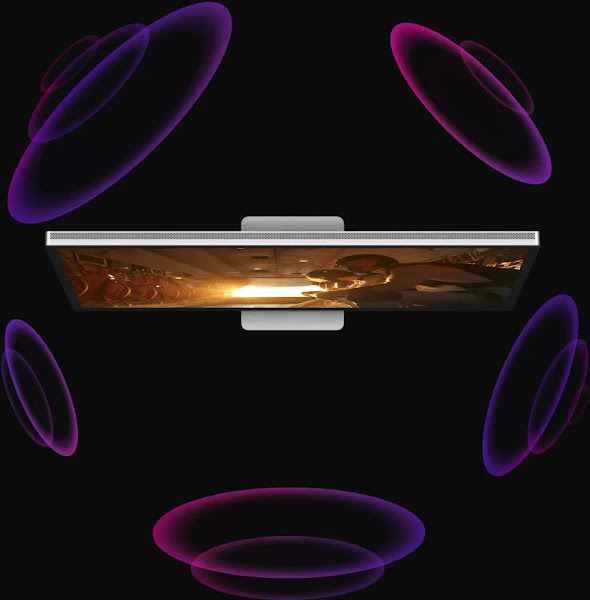The 27–inch 5K Retina display has some surprise hits — and misses
Now that the 27–inch iMac has joined the Power Mac G4 Cube and the original MacBook in the great big Apple resting place in the sky, the new Studio Display could be the next best thing. Maybe. Released alongside the new Mac Studio, the Studio Display sports a 27–inch 5K Retina display and even bears a passing resemblance to the 24-inch iMac. It is also only Apple’s second display of the modern era, joining the 32–inch Pro Display XDR ($4,999), but at a more reasonable $1,599.
We say “reasonable”, but there’s a catch. The $1,599 price either gets you a Studio Display with a fixed height but tilt–adjustable stand or a VESA mount. For a height–adjustable stand you’ll need to spend an extra $400. Where rival monitors often include a height–adjustable stand and a VESA mount option as standard, Apple forces you to choose the one you want at buying time. You can, however, change your mind later and take the Studio Display to your local Apple Store and get the stand swapped out for another. And if you want non–reflective nano–texture glass? That’ll be an extra $300.
Also controversial is the use of a braided power cable that comes pre–attached to the display and can only be removed using a proprietary tool. The Studio Display also comes with a single Thunderbolt 3 input. While this means you only need to connect one cable to your Mac (and have it charge at the same time if it’s a MacBook Air or MacBook Pro), anyone needing HDMI or DisplayPort connections will need to buy an adaptor (there are none included).
Missing In Action
While the Studio Display’s 5K Retina screen looks great, it’s also missing the kind of features you’d expect to find in a monitor at this price — such as High Dynamic Range (HDR) support or a 100Hz or higher refresh rate. The lack of the former seems particularly egregious when the Studio Display is supposedly aimed at creative pros (or anyone who wants to watch HDR videos they’ve bought on iTunes), and also odd given that the Mac, iPhone and iPad all support HDR, with some (the iPad Air and iPad Pro) supporting 120Hz refresh rates too.
Things get stranger when you discover that the Studio Display is powered by the same A13 Bionic chip used on the ninth–gen iPad and runs iOS 15.4. Still, there’s always the 12MP Ultra Wide webcam and Center Stage — only the jury’s still out on that, as Apple’s promised update to fix a webcam quality issue was still to materialize as we went to press.
At least the Studio Display sounds as good as it looks — with six speakers and support for Spatial Audio as well as three studio–quality microphones. It also comes with a three–port USB–C hub, enabling you to hook up peripherals directly to the display rather than your Mac.
Apple Studio Display Features
27–inch 5K Retina display (5120x2880 pixels), 600 nits brightness, True Tone, 1xThunderbolt 3 port, 3xUSB–C ports
Apple Studio Display Price
- Standard glass – $1,599
- Nano-texture glass – $1,999
- Tilt- and height-adjustable stand + $400
While it’s great to have another monitor option from Apple, we believe the Studio Display has limited appeal.







Comments
Post a Comment